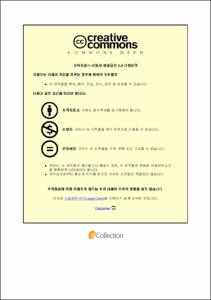용존산소 모니터링 및 제어를 통한 순환여과 양식시스템 내 무지개송어 (Oncorhynchus mykiss)의 적정 용존산소 농도평가
- Alternative Title
- Evaluation of the optimal dissolved oxygen level for rainbow trout (Oncorhynchus mykiss) in the recirculating aquaculture system using precision oxygen monitoring and control system
- Abstract
- Conventional aquaculture methods continue to lead to a decline in productivity due to frequent disease outbreaks caused by environmental contamination by aquaculture effluent, antibiotic use, and distrust of aquaculture products. For this reason, the recirculating system of aquaculture has gained importance and is becoming more common. The recirculating aquaculture system minimizes water consumption, effectively maintains water temperature in culture systems, and can maintain the optimal growth period of fish throughout the year.
Rainbow trout (Oncorhynchus mykiss) is a cold-water fish that has high fecundity and rapid growth compared to other fish, and is farmed worldwide as an important aquaculture fish. Especially in inland waters of Korea, it is the 3rd most farmed fish. Recently, it is gaining attention as an alternative to the fast growing salmon imports in Korea.
Dissolved oxygen is a very important environmental factor that greatly affects fish production and economics. Since 2018, the intelligent aquaculture platform using ICT has developed rapidly and spread worldwide. For smart aquaculture, the implementation of recirculating aquaculture systems is essential, but the baseline data for rainbow trout (Oncorhynchus mykiss) rearing in recirculating systems is insufficient. In addition, previous studies have not conducted long-term experiments as a function of dissolved oxygen concentration due to limited equipment. This study aims to determine the optimal dissolved oxygen concentration for rearing rainbow trout (Oncorhynchus mykiss) in a recirculating aquaculture system by using a device that can continuously and stably maintain, monitor, control, and record the dissolved oxygen concentration. The experiment was conducted for 8 weeks and the dissolved oxygen concentrations were set at 5~6 mg/L, 9~10 mg/L, 14~15 mg/L and 17~18 mg/L. The growth rate was significantly lower at the dissolved oxygen concentration of 5~6 mg/L, while there were no significant differences in the other experimental groups. However, in hematological analysis, growth hormone (GH) was significantly highest in the range of 5~6 mg/L, followed by 9~10 mg/L. Insulin-like growth factor-1 (IGF-1) was significantly highest at 5~6 mg/L. Cortisol, glucose, superoxide dismutase (SOD), catalase (CAT), immunoglobulin M (IgM) and lysozyme (LZM) showed no significant differences. The result of the experiment shows that the optimal dissolved oxygen concentration for rainbow trout (Oncorhynchus mykiss) in the recirculating aquaculture system is about 9~10 mg/L. It is not expected that a higher concentration than these values would not be beneficial for further growth or profitability.
- Issued Date
- 2022
- Awarded Date
- 2022. 2
- Type
- Dissertation
- Keyword
- 용존산소 무지개송어 순환여과 양식시스템
- Publisher
- 부경대학교
- Alternative Author(s)
- KUNHONG PARK
- Affiliation
- 부경대학교 대학원
- Department
- 대학원 수산생물학과
- Advisor
- 박정환
- Table Of Contents
- I. 서론 1
II. 재료 및 방법 4
II-1. 사육 시스템 4
II-2. 실험 어류 및 실험 조건 8
II-3. 수질 분석 12
II-4. 혈액학적 분석 14
II-5. 통계 분석 16
III. 결과 17
III-1. 성장 및 생존율 17
III-2. 수질 분석 19
III-3. 혈액학적 분석 28
IV. 고찰 38
감사의 글 42
참고문헌 44
- Degree
- Master
- Files in This Item:
-
-
Download
 용존산소 모니터링 및 제어를 통한 순환여과 양식시스템 내 무지개송어 (Oncorhynchus mykiss)의 적정 용존산소 농도평가.pdf
기타 데이터 / 2.21 MB / Adobe PDF
용존산소 모니터링 및 제어를 통한 순환여과 양식시스템 내 무지개송어 (Oncorhynchus mykiss)의 적정 용존산소 농도평가.pdf
기타 데이터 / 2.21 MB / Adobe PDF
-
Items in Repository are protected by copyright, with all rights reserved, unless otherwise indicated.